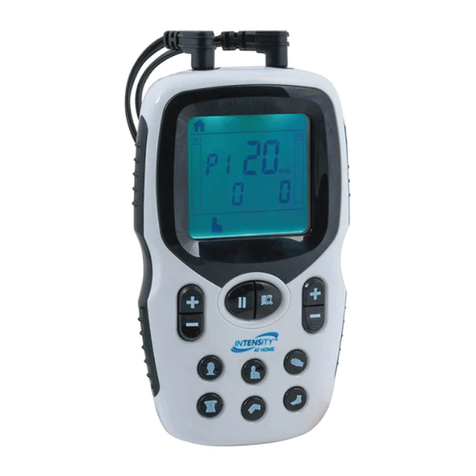17) The electrodes are only to be placed on healthy skin. Avoid
skin irritation by ensuring that good contact is achieved between
electrodes and skin.
18) If the stimulation levels are uncomfortable or become
uncomfortable, reduce the stimulation Intensity to a comfortable
level and contact your physician if problems persist.
19) This device should not be used while driving, operating
machinery, close to water, or during any activity in which
involuntary muscle contractions may put the user at undue risk of
injury.
20) Never use the device in rooms where aerosols (sprays) are
used or pure oxygen is being administered.
21) Do not use it near any highly flammable substances, gases or
explosives.
22) Do not use this device at the same time as other equipment
which sends electrical pulses to your body.
23) Do not confuse the electrode cables and contacts with your
headphones or other devices, and do not connect the electrodes
to other devices.
24) Do not use sharp objects such as pencil point or ballpoint pen
to operate the buttons on the control panel.
25) Inspect Applicator cables and associated connectors before
each use.
26) Turn the device off before applying or removing electrodes.
27) Electrical stimulators should be used only with the leads and
electrodes recommended for use by the manufacturer
28)
1)
2)
This device has no AP/APG protection. Do not use it in the
presence of explosive atmosphere and flammable mixture.
Adverse Reactions:
Skin irritation from the electrode gel and electrode burns are
potential adverse reactions. If skin irritation occurs, discontinue
use and consult your physician.
If the stimulation levels are uncomfortable, reduce the stimulation
Note: Always use electrodes that are legally marketed and sold in
the United States under 510K guidelines.
Intensity to a comfortable level and contact your physician if
problems persist.




























